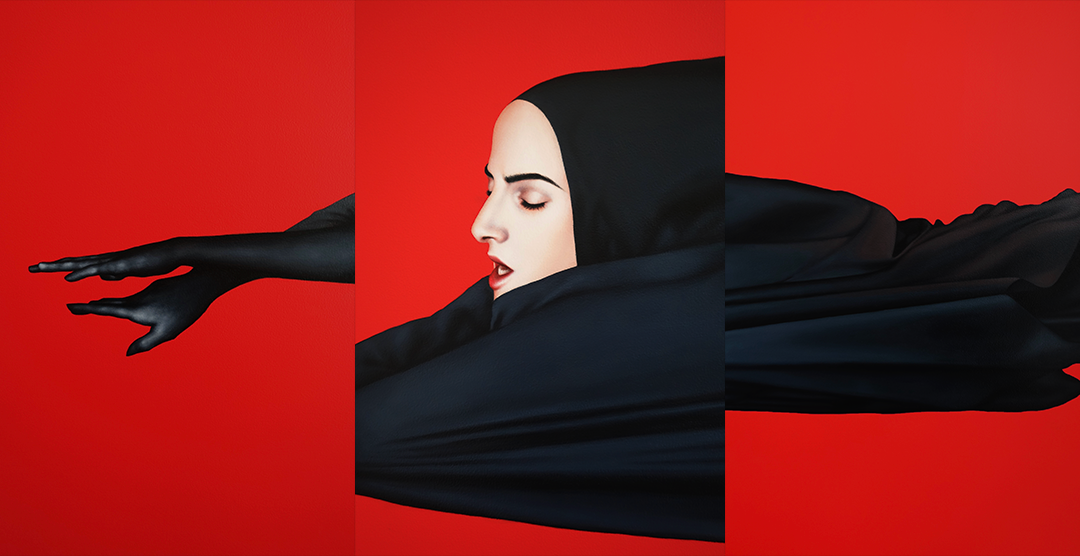“Ecdysis” vs “Genesis”
These two works form a diptych meditating on the cyclical forces of destruction and creation, endings and beginnings. They exist as counterpoints—one a quiet departure, the other a sudden arrival. Ecdysis marks the moment of shedding, of release and transformation; Genesis captures the violent beauty of emergence, the soul’s entry into form. Each pigment in this diptych was intentionally chosen and woven into the narrative of the works.Color Charts / Sketches
“Ecdysis”
Acrylic on Canvas, 240 x 120 x 4 cm, 2025
Ecdysis is the scientific term for the shedding of skin in reptiles. If a snake can’t shed, it dies—a metaphor for growth and transformation.
This self-portrait captures a moment of transition, a surrender to change. One self fades, another awakens. The soul rises. Something is left behind. Something begins. Somewhere in between, a moment lingers.
Inspired by the Magnum Opus of alchemy and Carl Jung’s idea of inner transformation, this painting was made using only 4 pigments—each chosen to reflect the 4 stages of alchemical transformation: the symbolic journey from dissolution to rebirth.
Nigredo (Dioxazine Violet) — decay, ego death
Albedo (Titanium White) — purification, a blank slate
Citrinitas (Viridian Green) — growth, awakening
Rubedo (Quinacridone Red) — unity, rebirth








“Genesis”
Acrylic on Canvas, 240 x 120 x 4 cm, 2025
Genesis explores the moment of becoming—of birth, emergence, and the start of something unknown. If Ecdysis is a departure, Genesis is the arrival.
A figure cuts through a vast red void—both soul and seed, hurtling toward existence with no memory, no choice. It is the first crossing, the rupture before form, the threshold of becoming. Raw, instinctive, innocent, yet inevitable.
The void was painted with Redstone, a pigment made from red ochre, an iron-rich clay used in prehistoric cave art. In the Book of Genesis, the first humans were formed from clay. I chose this pigment to link the painting symbolically to earth, body, and blood.












